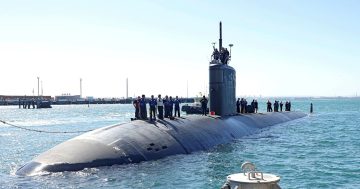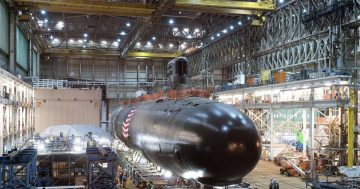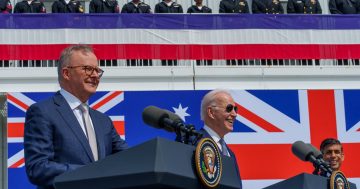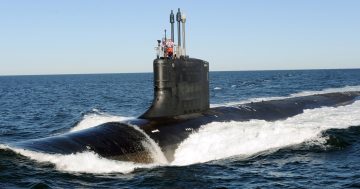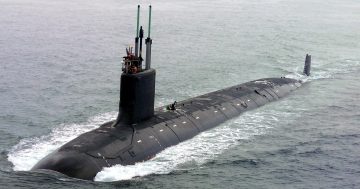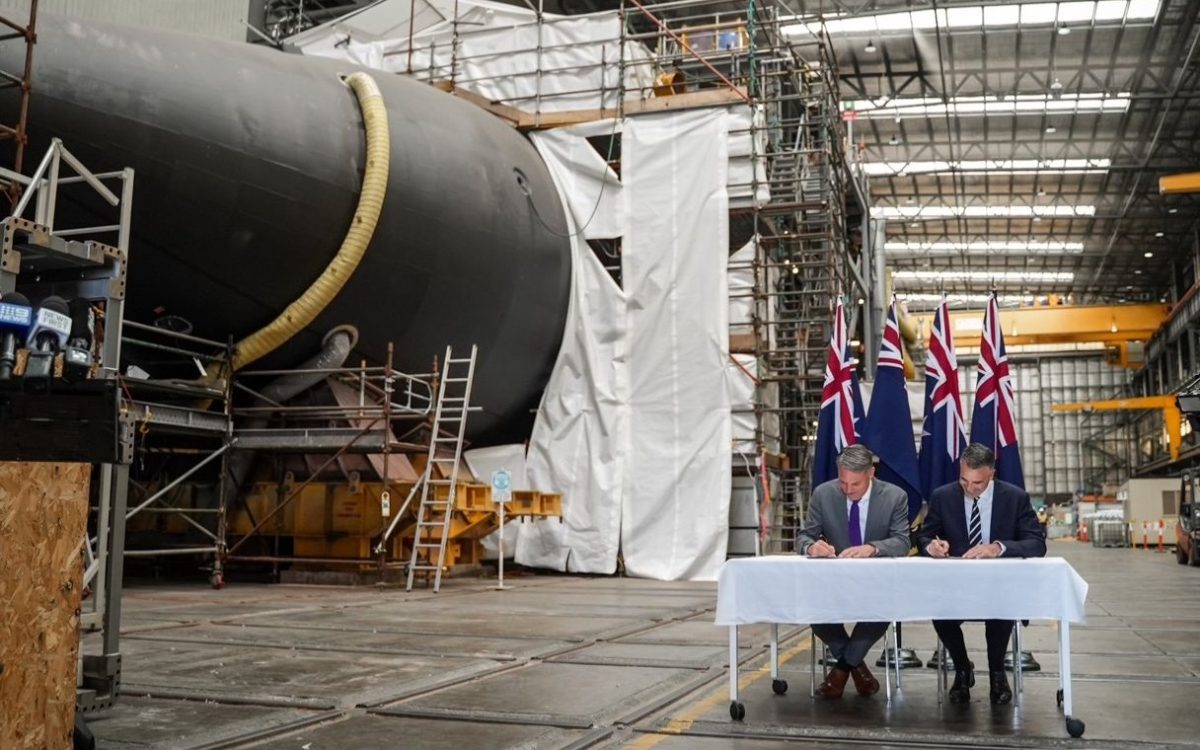
Defence Minister Richard Marles and SA Premier Peter Malinauskas sign an agreement to spend the first of about $200 billion building a new shipyard, training a dedicated workforce, and building SSN-AUKUS submarines in Adelaide. Photo: ADF.
During the COVID-19 pandemic, material and labour supply chains across the world were severely constrained. Factories closed, workers stayed home and transport routes were shut down.
However, while society has re-opened, some industries and supply chains remain perilously fragile as companies struggle to invest in updated infrastructure and workforces.
I’ve already written much about the ongoing issues in the US submarine industrial base, and no doubt many more column inches will be devoted to it in the years to come.
In summary, workforce shortages in the US continue to hamper the US Navy’s efforts to increase its own submarine production rate to a level where it can maintain sufficient boats of its own in the water, let alone provide up to five Virginia class nuclear-powered submarines (SSN) to Australia.
A $4.5 billion cash injection from Australia is designed to help improve this, but it’s not terribly clear what throwing money at the problem will do, and it’s certainly not a switch that can just be flicked.
A similar investment by Australia in the UK’s nuclear submarine supply chain over the next six years is meant to allow Rolls-Royce to develop and increase production of a new nuclear reactor, which the UK’s and Australia’s SSN-AUKUS boats will use.
But a small glimmer of hope for Australia’s Virginia class ambitions popped up last week in the form of a near-decade delay to the US Navy’s nascent program to build a next-generation submarine to follow the Virginia program.
Dubbed SSN(X), funding for that program has been deferred from 2035 to at least the early 2040s, which means Virginia boats will need to remain in service and will likely be in production longer.
Like the US, Australia is currently experiencing low rates of unemployment, and many industries, including building and construction, as well as the trades and services sector, are unable to attract sufficient staff.
This also applies to Defence which, despite both actively trying to recruit and grow while offering financial incentives and promises of greater family stability to current staff, continues to experience falling personnel numbers.
In order to build Australia’s SSN-AUKUS submarines in Adelaide, the Australian Government is planning to grow a workforce of some 5500 people while investing billions in a new shipyard.
Manufacturing work on the submarines isn’t expected to commence for another decade and a half, but money has already been poured into land acquisition for the shipyard and into educational institutions to develop the required courses and trades.
In the meantime, Australia’s building and construction industry is massively short of workers. With older tradies retiring, younger people are not replacing them at anywhere near the rate required to sustain the industry, let alone to build the 1.2 million additional homes the government says we need over the next decade.
Immigration can address some shortfalls, but immigrants and their families also need homes. Additionally, even those immigrants with trades may find their qualifications aren’t recognised here.
Immigration also won’t solve the submarine workforce issue, as those coming from many countries are unlikely to gain the security clearance necessary to work on the boats.
I’m not an economist, but I can’t help but wonder that, instead of trying to grow 5500 workers for a niche program that will generate little in the way of revenue going back into the economy, why not spend that money growing tradies who will build more housing, or become the childcare and aged care workers the country so desperately needs?
Most of the submarine program’s money will be spent on labour and systems, with a large proportion heading offshore, never to return.
Conversely, investing in builders, tradies and service sector workers will enable them to build homes and businesses, and to feed and care for their fellow Australians. And the revenue from the things they build, the companies they establish, the people they employ and the services they provide will stay mostly in Australia.
SSN-AUKUS is still very risky. Its design is years from being finalised, and its planned reactor is still being tested. The three to five Virginias Australia will ostensibly receive from 2032 are designed to de-risk our SSN-AUKUS plans because Virginia is an existing successful, proven and in-service design.
Anyway, back to the US Navy’s SSN(X) woes … the fact it will be investing in and building more Virginia class boats gives Australia an ‘out’ of its SSN-AUKUS ambitions.
Rather than building the boats in Adelaide, the government would likely not find it difficult to sell the idea of buying six more Virginias off-the-shelf from the US and instead invest the $200 billion and the associated workforce allocated for SSN-AUKUS in far more productive sectors of the economy.
Original Article published by Andrew McLaughlin on PS News.












